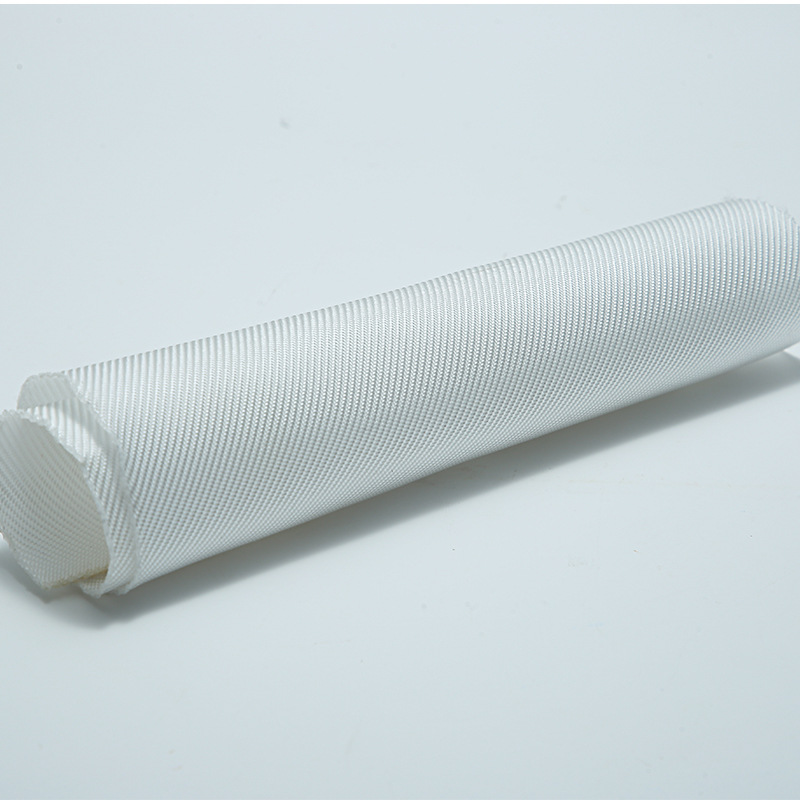
Tower press filter cloth is a crucial filtration material used for solid-liquid separation in various industries such as chemical, mining, metallurgy, and food processing. It functions by filtering the solid-liquid mixture through the filter cloth under pressure, trapping solid particles on the cloth while producing clear filtrate and dry filter cakes, achieving the objective of solid-liquid separation.

● High-Quality Material:
Yushai tower press filter cloth is made of high-quality synthetic fibers (PP, PET), providing excellent abrasion
resistance, chemical resistance, and high-temperature resistance, ensuring long-term stable operation.
● Exquisite Craftsmanship:
Through exquisite manufacturing techniques and strict quality control, tower press filter cloth has uniform
pore distribution, high filtration efficiency, and stable performance.
● Multiple Specifications:
We offer a variety of specifications and sizes to meet the requirements of different filtration equipment and
application scenarios. We also provide customized services to produce according to specific customer
requirements.
● Efficient Solid-Liquid Separation:
Tower press filter cloth achieves fast and efficient solid-liquid separation, generating clear filtrate and dry filter
cakes, thus improving production efficiency and product quality.
● Reliable Stability:
Yushai tower press filter cloth features a robust and durable design with reliable and stable performance,
capable of withstanding harsh working environments with high pressure, high temperature, and chemical
corrosion for extended periods.
When selecting filter cloths for filter presses, it's essential to consider their basic specifications including: yarn fiber material, yarn filament type, weave pattern, weight, permeability, cloth accessories, edge treatment, etc. They are all incorporated into our filter cloth structure to increase the cloth's lifespan, improve cake detachment characteristics, and enhance filtration operations.
1. Filter Cloth Materials
The yarn fiber materials for filter cloths for filter presses are typically produced from the following materials:
① Polypropylene (PP)
② Polyethylene (PE)
③ Polyester fiber
④ Nylon
⑤ Other materials
The selection of filter cloths for filter presses needs to consider the fiber and yarn types, as well as the weave pattern, to adapt to specific application scenarios and operating conditions.
2. Design of Filter Cloth Yarn
Different yarn designs for filter cloths for filter presses will result in different cloth characteristics. Common designs of filter cloth yarn include:
① Multifilament or continuous filament yarn
② Monofilament yarn
③ Staple yarn (spun yarn)
Multifilament Yarn: Multifilament or continuous filament yarn is produced through continuous extrusion of synthetic resin. Smooth filament bundles are twisted together in an "S" or "Z" twist to form yarn. Increasing the twist reduces entanglement (particles trapped within the yarn structure) but also decreases collection efficiency. Multifilament yarns have higher tensile strength and average particle collection efficiency, thus, generally facilitating cake detachment.
Monofilament Yarn: Monofilament yarn is a single, heavy extrusion. These extrusions are smooth and have high tensile strength. In some cases, they are modified with fillers. Monofilament yarns have excellent cake detachment and anti-wrinkle properties, but low particle collection efficiency.
Staple Yarn (Spun Yarn): Staple (spun) yarn is synthetic continuous filaments extruded and cut into short lengths. These short fibers are combed and twisted using cotton or wool manufacturing systems (wool yarn has a large volume). These staple yarn fibers have low tensile strength and large surface area. They have good particle retention but usually poor cake detachment.
3. Weave Pattern of Filter Cloth
Different weave patterns of filter cloths for filter presses will affect cake detachment characteristics, wear resistance, acid-alkali resistance, particle retention, etc. Common weave patterns for filter cloths include:
① Plain weave
② Twill weave
③ Satin weave
Plain Weave: Plain weave filter cloth is one of the simpler weave patterns. The warp and weft yarns alternate in crossing. Plain weave fabrics are usually not flexible but stable. They feature high particle retention and low abrasion resistance, with average cake detachment performance.
Twill Weave: Twill weave is characterized by diagonal or twill lines. Each warp floats on at least two or more consecutive weft yarns, increasing the number of yarns per unit area compared to plain weave, without sacrificing fabric stability. Its features include uniform cake detachment and good mechanical strength.
Satin Weave: The surface of satin weave fabric is almost entirely composed of warp threads generated from repeated weaving. This is the most flexible weave pattern, easily deforming around most contours. Satin weave is typically four, five, eight, or twelve threads. Its features include excellent cake detachment performance.
4. Compatibility of Filter Plates
When selecting filter cloths for filter presses, it's necessary to consider the types of compatible filter plates, including plate and frame filter plates, CGR filter plates, recessed filter plates, center feed filter plates, corner feed filter plates, etc. The selection of filter cloths for filter presses needs to consider the performance requirements based on the application materials, usage scenarios, etc., to correctly choose filter cloths based on their specifications and composition.